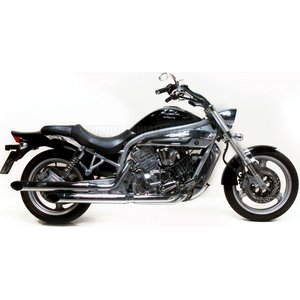Hyosung GV 650 Aquila (2005–2007): The Sport-Cruiser That Defied Expectations
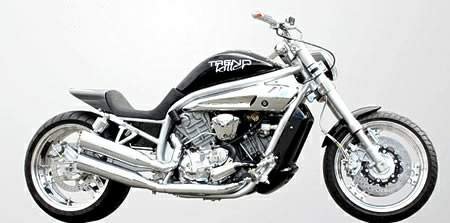
Introduction
The Hyosung GV 650 Aquila, produced between 2005 and 2007, remains a fascinating anomaly in the cruiser world. While cruisers often prioritize chrome over competence, the GV 650 dared to blend V-twin charisma with sportier aspirations. This Korean-made machine challenged stereotypes with its free-revving engine, agile handling, and head-turning design—all at a time when the cruiser segment was dominated by established Japanese and American brands. Let’s dissect what made this underdog a cult favorite—and why it still resonates with riders seeking a cruiser that doesn’t sacrifice performance for posture.
Design: A Modern Cruiser with Edge
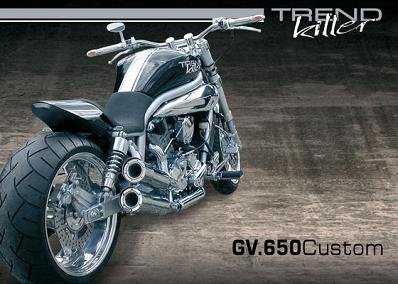
The GV 650’s design is a masterclass in balancing aggression and elegance. Its fluid lines and muscular tank evoke the Yamaha Warrior’s athleticism, while the low-slung profile (705 mm/27.8-inch seat height) ensures accessibility for shorter riders. The Aquila’s 41 mm USD forks and dual rear shocks give it a poised stance, and the chrome accents—though plentiful—avoid gaudiness. The cockpit features a green-lit digital dash, a controversial choice; while sleek, it becomes challenging to read under direct sunlight.
The Trend Killer special edition (2007) took customization further with a 240 mm rear tire, LED lighting, and a chopped rear fender. Though purely aesthetic, these mods showcased the GV 650’s potential as a blank canvas for personalization—a theme MOTOPARTS.store riders will appreciate.
Engine and Performance: The Heart of a Sportster
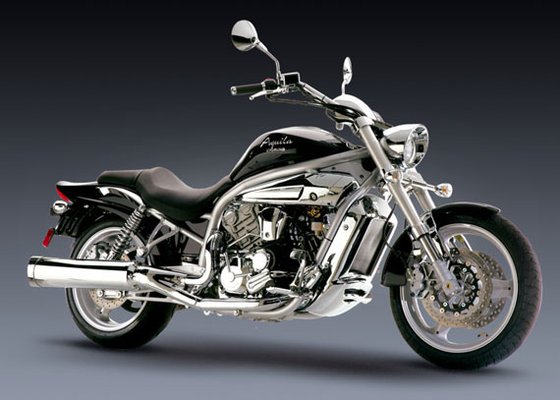
At its core lies a 647 cc, liquid-cooled, 90° V-twin—a rarity in cruisers of this era. With 72 HP (53 kW) at 9,000 RPM and 61 Nm (45 lb-ft) of torque at 7,500 RPM, the Aquila outpunched rivals like the Honda Shadow 750 (43 HP) and Suzuki Boulevard S40 (47 HP). The engine’s character is decidedly un-cruiser-like: it thrives above 5,000 RPM, pulling eagerly to its 9,500 RPM redline.
The carbureted setup (dual 38 mm Mikunis) delivers crisp throttle response, though cold starts require patience. Riders accustomed to lazy V-twins might find the GV 650’s urgency jarring—in the best way. The 5-speed transmission shifts smoothly, though neutral can be elusive at stops. A belt final drive keeps maintenance minimal, and the claimed 190 km/h (118 mph) top speed feels achievable with room to spare.
Ride and Handling: Leaning into the Curve
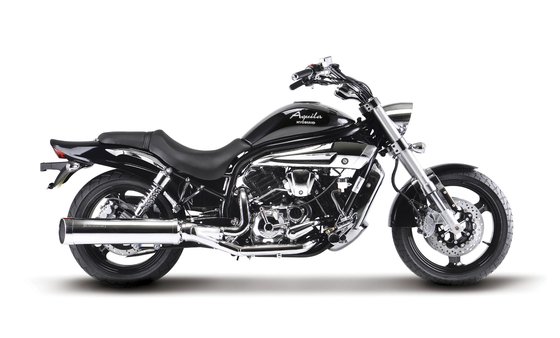
Cruisers aren’t known for cornering prowess, but the Aquila defies norms. The steel double-cradle frame and 1,665 mm (65.5-inch) wheelbase strike a balance between stability and flickability. The Bridgestone BT-054 tires (120/70-17 front, 180/55-17 rear) offer surprising grip, allowing confident leans—until the hero blobs screech. Ground clearance is limited (160 mm/6.3 inches), so aggressive riders will scrape pegs or exhaust flanges mid-corner.
The suspension—41 mm USD forks and preload-adjustable rear shocks—soaks up bumps competently, though heavier riders may desire stiffer settings. Braking is adequate, with dual 300 mm front discs and a 230 mm rear disc, but the initial bite lacks the sharpness of modern ABS systems.
Competition: How the Aquila Stacks Up
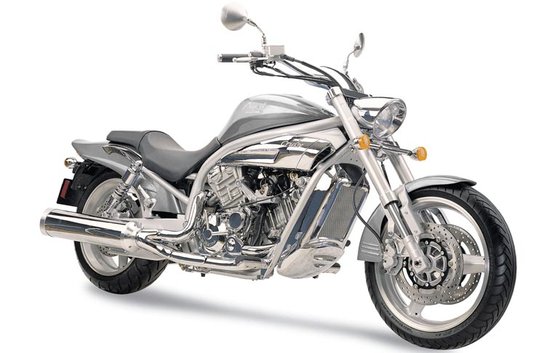
Honda Shadow 750
The Shadow’s air-cooled 745 cc V-twin is bulletproof but underwhelming (43 HP). It’s heavier (235 kg/518 lbs) and less agile, prioritizing laid-back cruising over excitement.
Suzuki Boulevard S40
Lightweight (179 kg/395 lbs) and simple, the S40’s 652 cc thumper appeals to beginners but falters at highway speeds. The Aquila’s power advantage is glaring.
Kawasaki Vulcan 900
A closer match in size, the Vulcan’s 903 cc engine offers similar torque (57 Nm) but lower revs. It’s more traditional, with a plush seat and relaxed ergonomics.
Verdict: The GV 650 carves a niche as a “sport-cruiser.” It sacrifices some comfort for thrills, appealing to riders who crave V-twin character without sacrificing RPMs. While Japanese rivals boast better dealer networks, the Aquila’s performance-per-dollar ratio remains compelling.
Maintenance: Keeping the Aquila Thriving
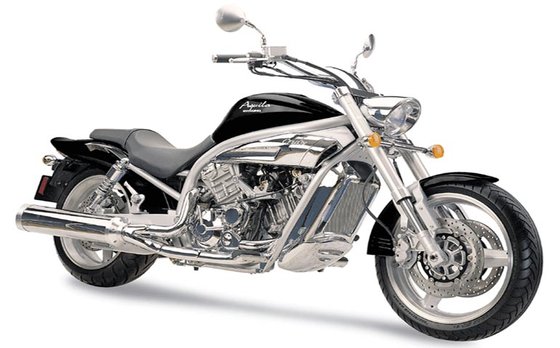
Key Considerations:
- Valve Adjustments: Every 12,000 km (7,500 mi). Intake: 0.10–0.20 mm (0.004–0.008 in), Exhaust: 0.20–0.30 mm (0.008–0.012 in). Use quality feeler gauges.
- Oil Changes: 3.2L of 10W-40 semi-synthetic (API SL grade) with filter. Hyosung’s wet-sump design simplifies DIY changes.
- Belt Drive: Inspect tension every 8,000 km (5,000 mi). No lubrication needed—swap if cracks or fraying appear.
- Cooling System: 1.6L of ethylene glycol coolant. Check for leaks around the liquid-cooled engine.
- Tire Pressure: Front: 2.2–2.4 bar (32–35 psi), Rear: 2.4–2.6 bar (35–38 psi).
Pro Tip: Upgrade to NGK CR8EIX iridium plugs for longer service intervals and smoother cold starts. MOTOPARTS.store stocks OEM-spec fluids, belts, and brake pads to keep your Aquila running sharp.
Conclusion: The Unlikely Icon
The Hyosung GV 650 Aquila wasn’t perfect—its dash was finicky, its fit-and-finish uneven—but it dared to be different. For riders bored of cookie-cutter cruisers, it offered a tantalizing mix of style, power, and agility. Today, it’s a bargain on the used market, and its belt drive and robust engine ensure longevity with proper care.
Whether you’re restoring a Trend Killer clone or tweaking a stock Aquila, MOTOPARTS.store has the gear to make it yours. From performance upgrades to routine maintenance, we’re here to keep your GV 650 defying expectations—one rev-happy mile at a time.
Specifications sheet
| Engine | |
|---|---|
| Stroke: | Four-stroke |
| Cooling: | Liquid cooled |
| Max power: | 52 kW | 70.0 hp |
| Max torque: | 61 Nm |
| Fuel system: | 2x 38 mm Carburettor |
| Lubrication: | Wet sump |
| Max power @: | 9000 rpm |
| Displacement: | 647 ccm |
| Max torque @: | 7500 rpm |
| Configuration: | V |
| Engine oil type: | Semi-Synthetic 10W-40 |
| Compression ratio: | 11.4:1 |
| Number of cylinders: | 2 |
| Dimensions | |
|---|---|
| Wheelbase: | 1665 mm (65.5 in) |
| Dry weight: | 218 |
| Wet weight: | 230 |
| Seat height: | 705 mm (27.8 in) |
| Overall width: | 840 mm (33.1 in) |
| Overall height: | 1155 mm (45.5 in) |
| Overall length: | 2040 mm (80.3 in) |
| Ground clearance: | 160 mm (6.3 in) |
| Fuel tank capacity: | 16 L (4.2 US gal) |
| Drivetrain | |
|---|---|
| Clutch: | Wet, multiple discs, cable operated |
| Final drive: | belt |
| Transmission: | 6-speed |
| Maintainance | |
|---|---|
| Rear tire: | 180/55-17 |
| Engine oil: | 10W40 |
| Front tire: | 110/70-17 |
| Idle speed: | 1400–1500 rpm |
| Break fluid: | DOT 4 |
| Spark plugs: | NGK CR8E or NGK CR8EIX |
| Spark plug gap: | 0.7 |
| Coolant capacity: | 1.6 |
| Forks oil capacity: | 0.84 |
| Engine oil capacity: | 3.2 |
| Engine oil change interval: | Every 5000km or 2 years, whichever comes first |
| Valve clearance (intake, cold): | 0.10–0.20 mm |
| Valve clearance check interval: | 24,000 km / 15,000 mi |
| Valve clearance (exhaust, cold): | 0.28–0.32 mm |
| Recommended tire pressure (rear): | 2.4 bar (35 psi) solo, 2.6 bar (38 psi) with passenger |
| Recommended tire pressure (front): | 2.2 bar (32 psi) solo, 2.4 bar (35 psi) with passenger |



